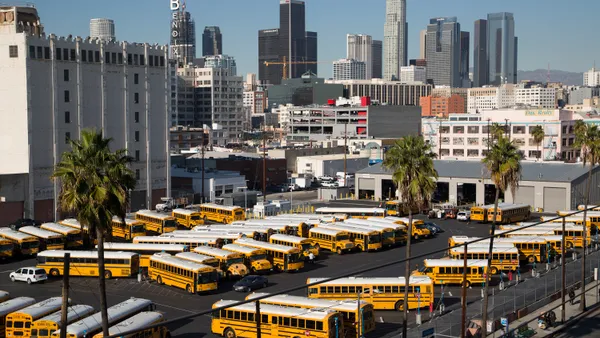Dive Brief:
-
Combined Black and Latino-majority cities may have “greater opportunities to improve local prosperity through shared initiatives,” according to a report Thursday by the Brookings Institution, a nonpartisan think tank.
-
Many Black and Latino-majority places have almost equal shares of Black and Latino residents, which could allow more place-based racial coalitions in large cities such as Chicago, Dallas and New York City, the report says.
-
“Just as in the fictional nations of Wakanda and Talokan, the demographic trends in these communities here in the U.S. present real opportunities for racial coalitions that can shift the balance of power around critical quality of life areas such as housing, employment, education, and political representation,” the report says, referring to two nations in Marvel’s Black Panther comic book and film series.
Dive Insight:
About 22% of U.S. cities were “majority-minority” between 2015 and 2020, according to Brookings’ analysis of the Census Bureau’s most recent American Community Survey data. Those cities tend to be larger, with 17 of them having over 500,000 residents, the report says. Nearly three-quarters of people living in majority-minority places are in cities with populations over 50,000.
Almost half of Black and Latino or Hispanic residents in majority-minority places live in combined Black and Latino-majority cities. These include cities with less than one million residents, such as Oakland, California; Tampa and Orlando, Florida; and Kansas City, Kansas.
“This is an insight that we miss if we consider Black and Latino communities in isolation and speaks to the need for a more intersectional lens when we talk about improving place-based outcomes for minority groups,” said Manann Donoghoe, co-author of the report and senior research associate at Brookings, in an email.
But coalition-building among Black and Latino or Hispanic residents in these communities has been challenging, according to the report.
“For decades, activists have tried to build coalitions between African American and Latino or Hispanic populations on issues such as housing discrimination, poverty, and workers’ rights,” the report says. “While many organizers and politicos have seen the potential of such coalitions to advance various agendas, getting these populations to join forces has been difficult.”
The number of Black people living in Black-majority places grew 1.3% overall from 2015 to 2020, even though large and mid-sized Black-majority cities lost about 200,000 Black residents, according to Brookings’ analysis.
While the Black population has increased in small and very small places, gentrification and the growth of White and/or non-Black residents have increased in larger cities such as Washington, D.C., and Richmond, Virginia, which no longer have Black majorities, the report says.












